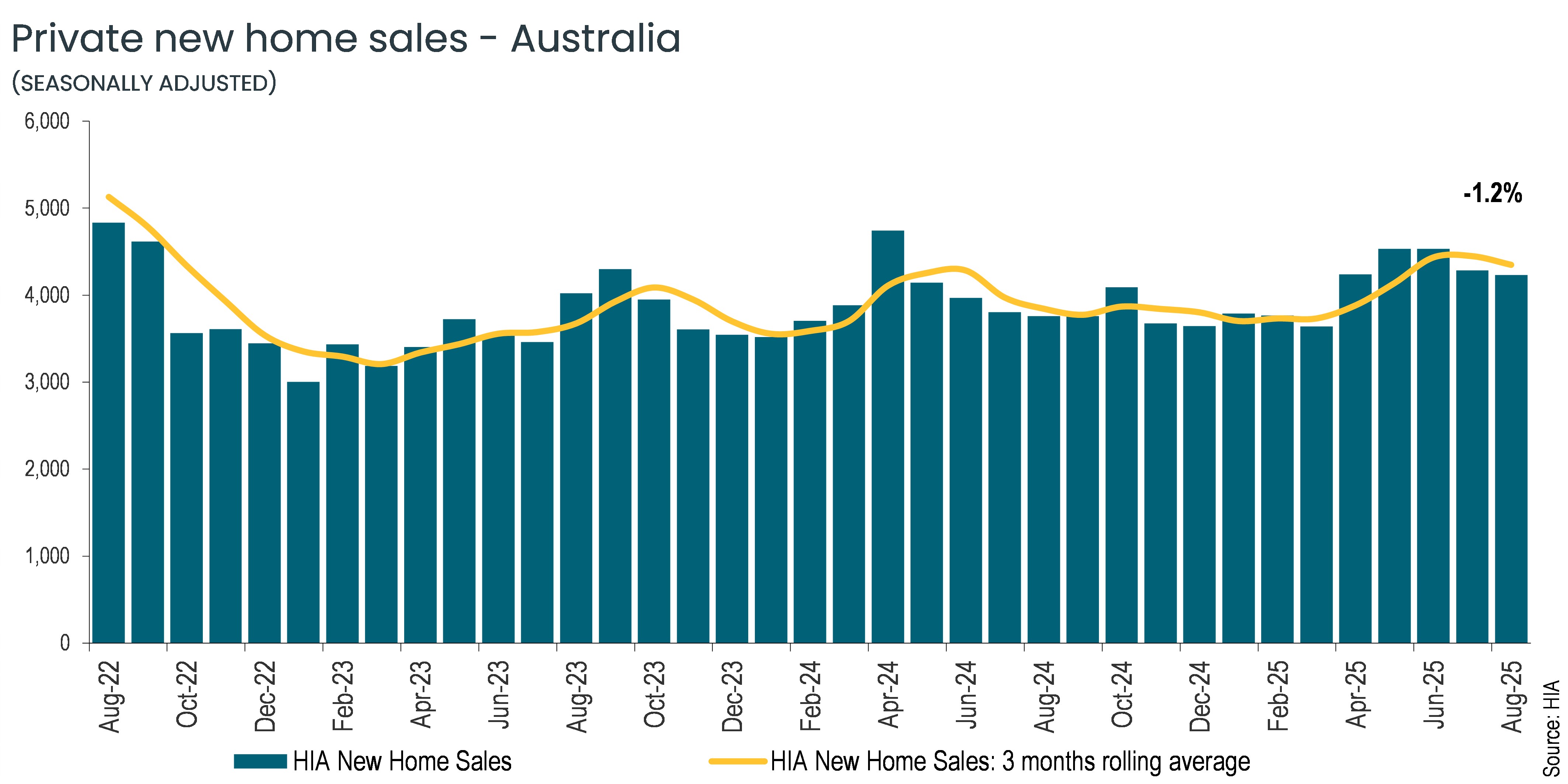New home sales remain around three-year high - HIA
NEW HOME sales in Australia are still peaking at their three-year highs.
“The volume of new homes sold (contract-to-build) nationally decreased by 1.2% in the month of August 2025,” HIA senior economist, Tom Devitt said.
The Housing Industry Association (HIA) New Home Sales report is a monthly survey of the largest volume home builders in the five largest states and is a leading indicator of future detached home construction.
“New home sales in the three months to August 2025 were 5.1% higher compared to the previous quarter,” Mr Devitt said.
“Despite the slight monthly moderation, sales in the three months to August 2025 remain higher than any previous quarter in the last three years. 
“This indicates that cuts to the cash rate are leading to a return in home buying activity, albeit very slowly.
“Demand for housing continues to increase due to elevated population growth and sustained low levels of unemployment.
“These factors have contributed to an increase in home buying activity, leading to an increase in the price of established homes,” Mr Devitt said.
“Ongoing competition for a limited stock of established homes available for purchase has seen buyers moving into new home building as an alternative.
“The supply side stimulus resulting from the Australian Government’s decision to remove the requirement for mandatory Lenders’ Mortgage Insurance (LMI) for first home buyers, will also boost new home sales.
“Around a third of all new homes are built by first home buyers and they play an important role in increasing housing supply.
“Reducing the barriers to entry for first home buyers will lead to an increase in housing supply, putting downward pressure on prices beyond the short term and increasing rates of homeownership,” Mr Devitt said.
This month’s decrease in new home sales nationally was driven by declines across all states except Victoria, where sales increased by 7.1%. The monthly declines were led by Western Australia, with sales decreasing by 7.7%, followed by Queensland (-6.7%), South Australia (-6.0%) and New South Wales (-1.2%).

 How to resolve AdBlock issue?
How to resolve AdBlock issue?